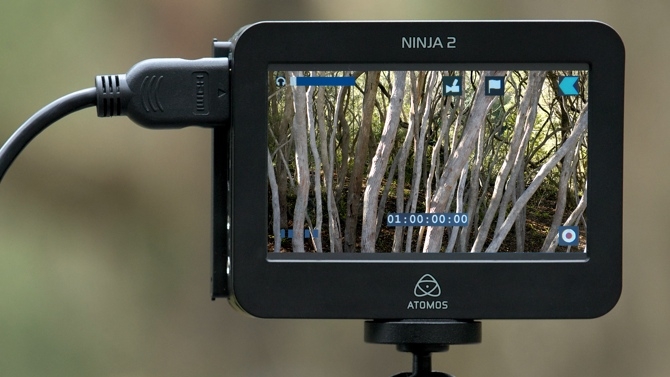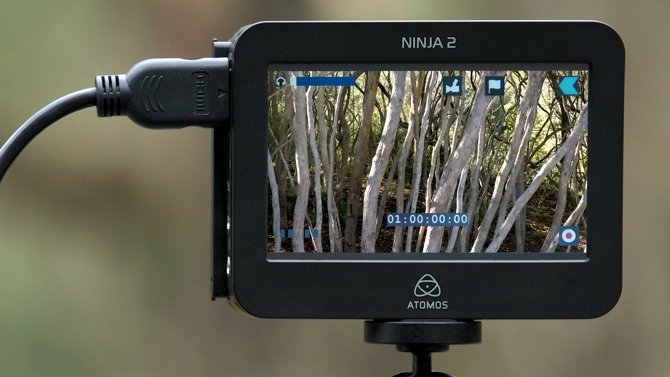
 Ninja 2
Ninja 2
Phil Rhodes looks at the Atomos Ninja 2 Field Recorder in this second part of his Nikon D800 + Ninja 2 review.
Atomos recently released the Ninja 2 recorder into a what I’ve started to think of as a fairly crowded market. There are a variety of technical approaches to building recorders which are interesting because they directly affect crucial factors such as size, weight, and power consumption, as well as the feature set it’s possible to provide. Atomos’ choice is to build custom electronics from the ground up, as opposed to putting a small PC in a box. This means that the device can be small and light and start up quickly while consuming comparatively little power, although new features require new embedded systems code. It therefore isn’t as easy to add new things as it is in something like CineDeck’s competing products which run a conventional operating system. Personally I think there’s plenty of room for these and all the other approaches, and it’s nice to see this sort of thing advancing in a few different and interesting directions. Certainly Ninja 2's power consumption is vanishingly low, peaking at just under 6 watts with everything running, and three watts on standby. There's an Anton Bauer power tap adaptor, and I suspect anyone running one of these from a broadcast camera battery will hardly notice the difference.
Using the Ninja 2
In use, the Ninja 2 has all the controls one would expect – format selection, audio setup, and a big “record” button, among other things. There is provision for remote automatic start, presumably signalled over the HDMI, but there wasn't an option to do this with the D800. I don’t think that the display, as a monitor, is that much better than that on the back of the camera, although the D800 itself does have a particularly nice display and in many cases the recorder would be a usable framing reference. More problematically, it’s a resistive touchscreen, which feels sluggish and insensitive to people used to using modern cellphones with capacitive screens, but it works. Atomos makes the reasonable point that having to actually “press” the screen reduces the chances of falsely triggering something. The connectivity is HDMI for video and 3.5mm stereo mini-jacks for audio, which is fine at this price point and a much improved option over the typical DSLR’s offering, and material is laid down to disk as ProRes LT, HQ or 422.
Audio
The only big issue is the audio metering. Considering this is a device that begs to pair up with DSLRs, people will clearly and overwhelmingly want to use the the recorder's audio line inputs, the ability to calibrate them is absolutely critical. As it stands, audio metering is limited to a couple of blocks of colour a few pixels high which fill up with increasing signal level. That isn’t anywhere near enough precision, and there’s no scale or indication of the absolute signal level.
This is less of a problem if you’re feeding the recorder audio over HDMI, which is supported, as digital audio level is absolute and a simple indication of signal presence is fine. That’s of no use to the DSLR shooter, though, as no sane recordist would put up with the noisy microphone-level inputs on the DSLR just for the privilege of having it send the audio to the recorder. They do need to improve audio metering as a matter of urgency.
What I really liked about the recorder was the ability to use mechanical disks as well as SSDs, a choice unique to Atomos products, as far as I know. There are of course robustness concerns and I’d only consider using them on repeatable shoots in very benign physical circumstances, but it’s nice to know you have fifteen hours of ProRes 422 available. With any such approach there’s a concern over exactly how long SATA connectors will last when used in the field as a removable-media connector, but this is certainly a quick, easy and low-cost approach that makes recording time easy to buy all over the world.
And then, you're in the edit, and it's already ProRes, which is great.
Tags: Production


Comments